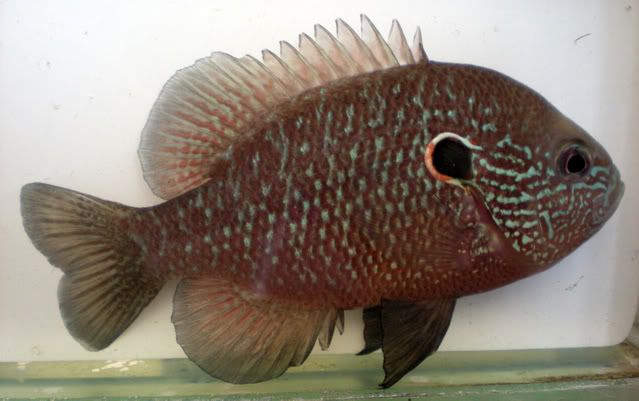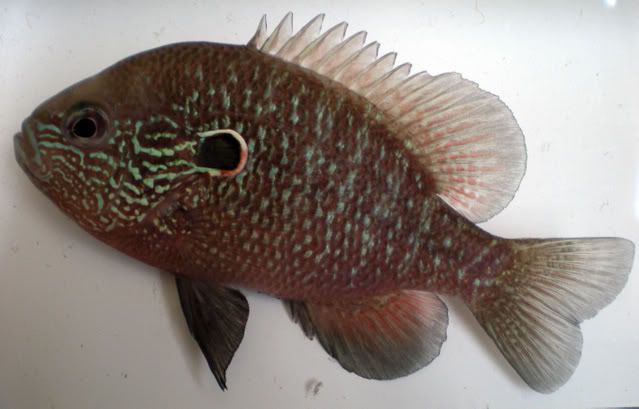I like that fish, he has an aura that he could do you some harm if he wanted to.
I was thinking that too, he's a tough customer. That's not an aura that bodes well in a community aquarium, though. He's being moved to his own aquarium.
Beautiful specimen and photographs. The jet black comes out on the dominant spawning male. You basically have to pull them off the bed to see it, which it sounds like you did  We saw some spawning last year in the Raisin. They flash even more black in the act, extinguishing pretty much all color. I wish I'd had my video with me that day, I didn't expect there to be enough water, but they were getting their business done right below the dam, which is usually flowing, but was then choked with plants.
We saw some spawning last year in the Raisin. They flash even more black in the act, extinguishing pretty much all color. I wish I'd had my video with me that day, I didn't expect there to be enough water, but they were getting their business done right below the dam, which is usually flowing, but was then choked with plants.
Is it a Sneegas or Roston photo of the centrals that's all fired up blue? All that blue in the northerns goes black. Or maybe it's the red. Something goes black. It's awesome.
The rainbow darters in the Maumee and Michigan do the same thing too, except it's just really dark navy. I wonder if it's some type of local adaptation to the northern conditions, perhaps since there'd been more plants and tannic water than occurs across the rest of the range? Wild speculation here. But interesting to think about.
Todd
The only spawning sites I've ever seen of Sunfish have been in lakes/ponds. I need to make that more of a priority in the late spring/early summer to check the rivers and creeks for sunfish spawning beds. You're saying that these remmnants of the Black Swamp that were spawning in conditions of tannin stained waters may have adapted darker breeding patterns than ones that historically did not have that stain to their water? Hmm...how does that aid these fish in the darker stained water? Avoidance of predators during the time they are most colorful? Maybe not. Blue is able to be seen further in low light conditions. It's one of the last colors to dissappear in low-light conditions. This dark coloration
would allow gravid females to find them easier and males to know where another male is (territory). It works in that way.
Edited by NateTessler13, 16 January 2009 - 08:36 AM.










